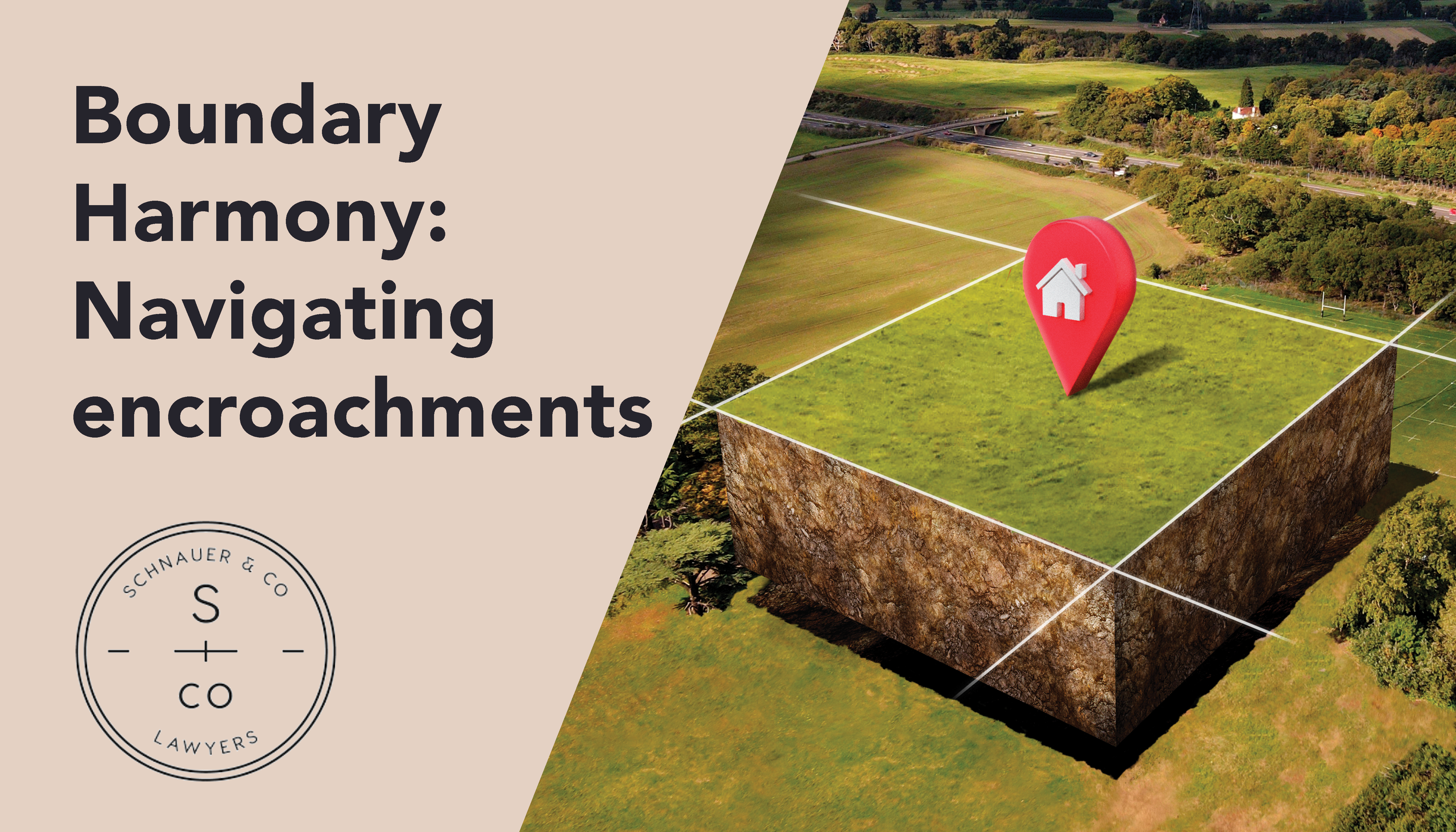Boundary Harmony: Navigating encroachments

Every so often, Schnauer & Co will have enquiries from clients about an encroachment that they have become aware of, many years after purchasing their property. For example, you have your land surveyed and find out that your neighbour has built a fence, not on the boundary, but actually on your land. Or there is a structural addition that extends beyond the legal property boundaries. Usually this is picked up when owners are selling (during the purchaser’s due diligence) or if they are considering subdivision/construction of any extensions or additions.
It is not uncommon for purchasers to struggle to locate boundary pegs and to decide not to have the property surveyed.
This creates a risk that there could be a boundary encroachment or the land you assume will be yours, isn’t. This can also create a defective title and potentially issues with your neighbours and prospective purchasers.
When you purchase a property, your legal adviser should provide you with a copy of the title and deposited plan which shows the boundaries. You will be advised to study it and let them know if you have any concerns.
It is very important to check the physical boundaries and establish where the pegs are.
There are various free mapping software products available online (if possible, consider this before signing an agreement to purchase the property).
If you become aware of a defect in the title such as an encroachment, then you must immediately notify your legal advisor. Purchasers have some protection in the event of any material defects with the title when it comes to the requisition term (specific time-frames apply, assuming the provision in the agreement for sale and purchase is not deleted). It is best to deal with any defects or any notices regarding issues prior to declaring your agreement unconditional. This is because it could be argued that you accepted those issues, and it could affect your ability to pursue the vendor for costs after settlement.
Some older titles have a notation “limited as to parcels” which means that the legal boundaries are uncertain. There is a greater risk with this type of title of a boundary encroachment especially if any extensions on the property are located close to where the boundary is estimated.
Responsibility for encroachments, regardless of origination, rests with the current landowner. The Court has certain powers to help in the case of encroachments.
Boundaries were set out by the surveyor when the land was first subdivided (e.g. when new title to the properties issued) and these cannot be altered without your consent and the consent of the adjoining lot owner. If there is a dispute which can’t be resolved between the parties, a surveyor can establish where the boundaries are, and they can replace survey pegs which have been lost or removed.
You may be able to negotiate with your neighbour to purchase or sell the area of land on which the encroachment is located. This would require a subdivision consent for the boundary adjustment.
Alternatively, you could make an application to the Court. Under the Property Law Act 2007, the Court can make orders which it thinks are just and fair in the circumstances. This may include reasonable compensation to be paid, making an Order to remove the structure, giving the owner of the affected land the right to possession of the structure on their land, making an Order for the affected land to be vested in the owner of the wrongly placed structure, or by the granting of an easement.
If there is a fence which is not located on the boundary line, then the Fencing Act 1978 applies. The Act requires that any fence is built as close as possible to the boundary line. If it is found that a fence has been erected on the boundary line without the consent of the owner of the land, an application can be made to the Court for an Order that the fence be removed. The Court can order the removal of the fence (at the expense of the person who erected it) unless it is satisfied that:
- the degree of encroachment is minimal; and
- the encroachment in no way adversely affects the use and enjoyment of the land by the applicant.
In conclusion, it's wise for prospective property buyers to be vigilant in their pre-purchase due diligence investigations to avoid potential legal headaches and to protect the value of their property investment.
You can contact the team at Schnauer & Co. by getting in touch with Kim Hunt.
Kim Hunt
Senior Registered Legal Executive
Email: Khunt@schnauer.com
DDI: 09 892 0351


